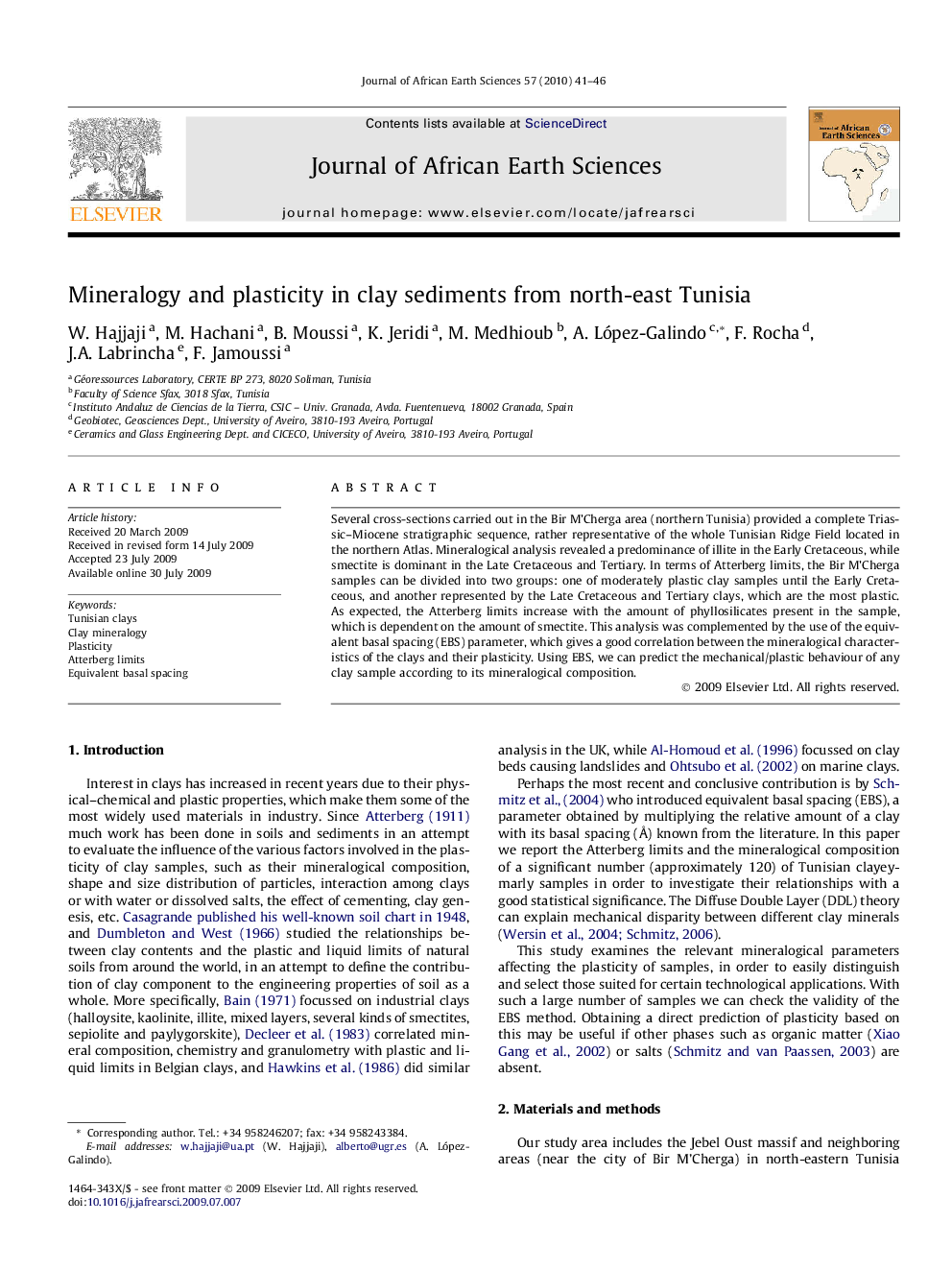| Article ID | Journal | Published Year | Pages | File Type |
|---|---|---|---|---|
| 4729526 | Journal of African Earth Sciences | 2010 | 6 Pages |
Several cross-sections carried out in the Bir M’Cherga area (northern Tunisia) provided a complete Triassic–Miocene stratigraphic sequence, rather representative of the whole Tunisian Ridge Field located in the northern Atlas. Mineralogical analysis revealed a predominance of illite in the Early Cretaceous, while smectite is dominant in the Late Cretaceous and Tertiary. In terms of Atterberg limits, the Bir M’Cherga samples can be divided into two groups: one of moderately plastic clay samples until the Early Cretaceous, and another represented by the Late Cretaceous and Tertiary clays, which are the most plastic. As expected, the Atterberg limits increase with the amount of phyllosilicates present in the sample, which is dependent on the amount of smectite. This analysis was complemented by the use of the equivalent basal spacing (EBS) parameter, which gives a good correlation between the mineralogical characteristics of the clays and their plasticity. Using EBS, we can predict the mechanical/plastic behaviour of any clay sample according to its mineralogical composition.
